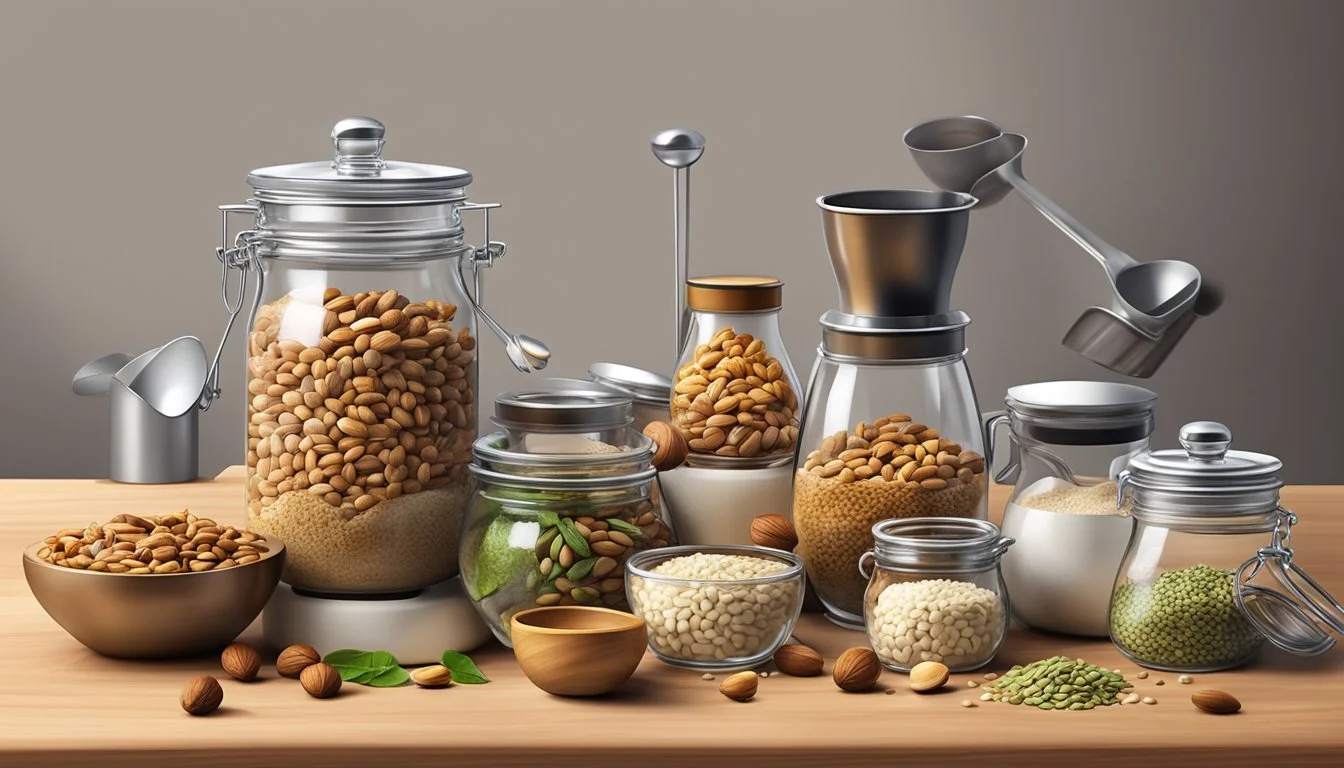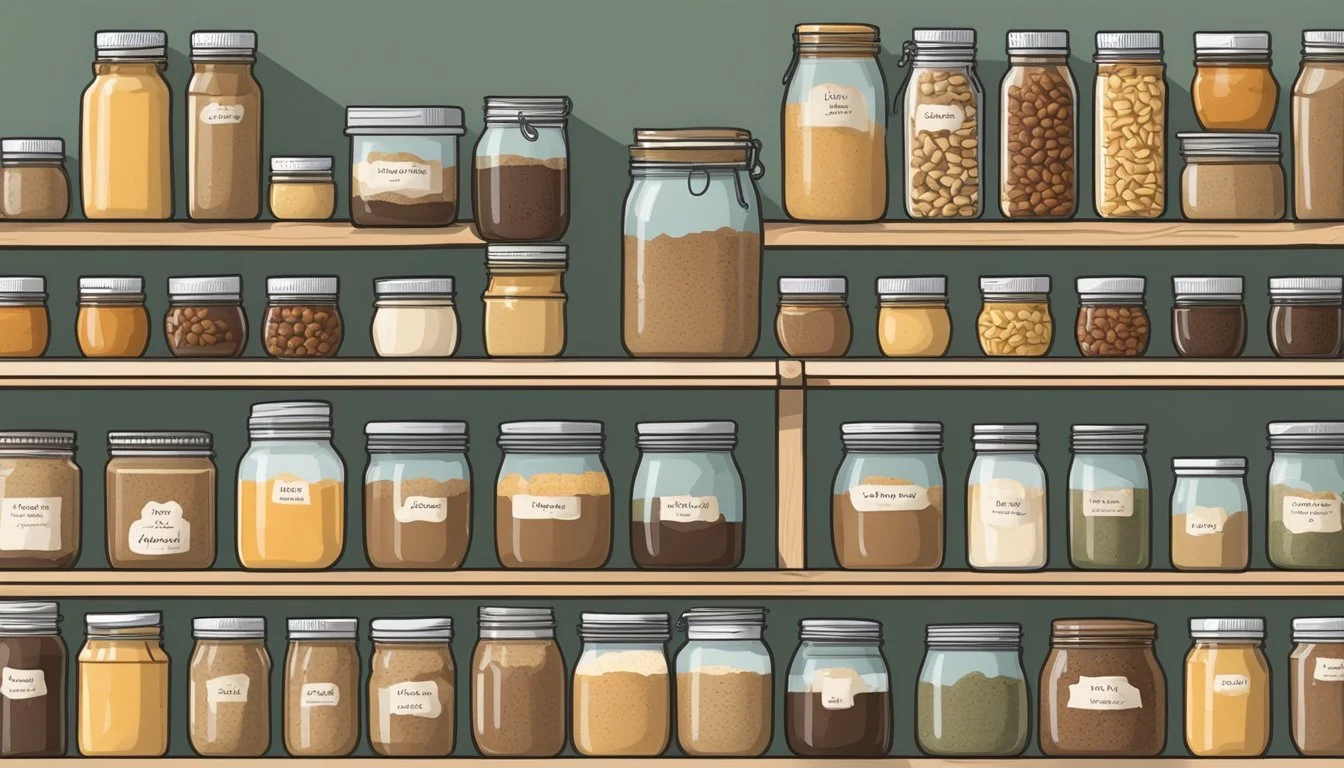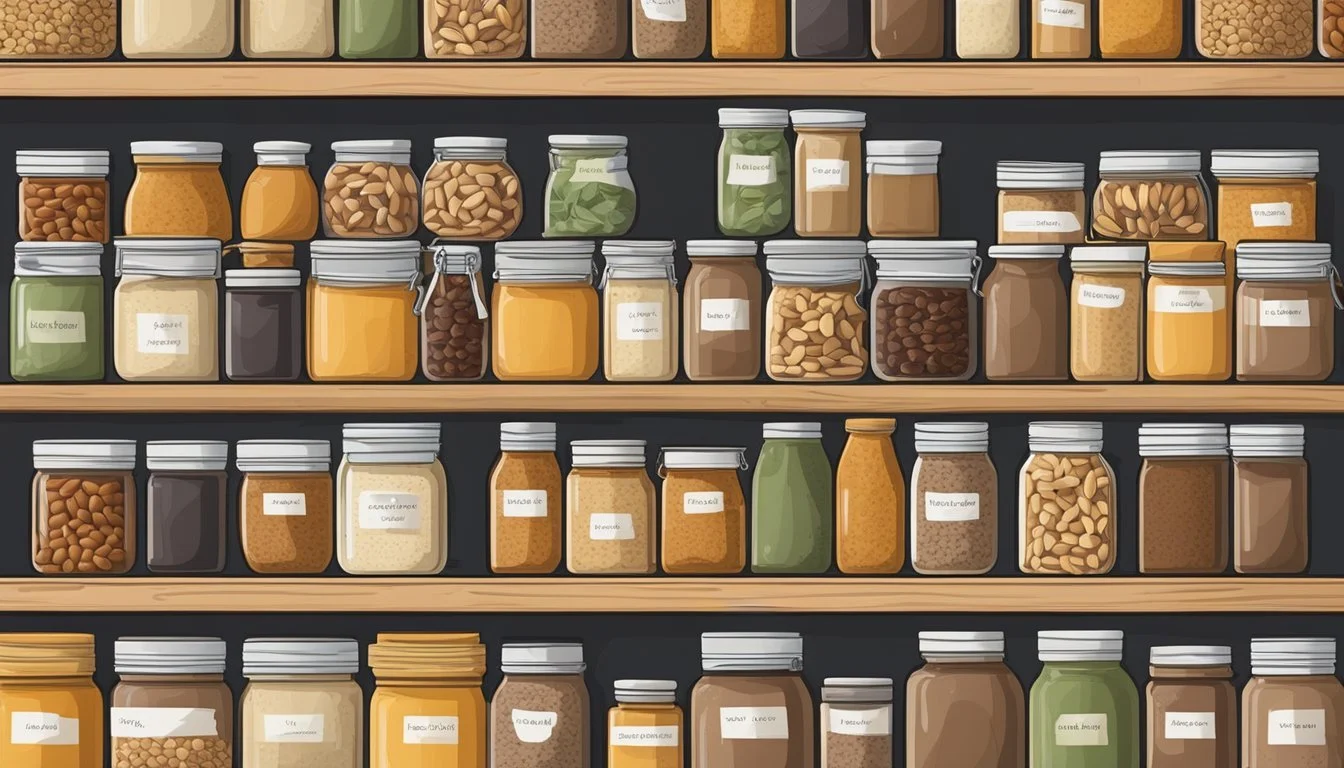Pantry-Based Homemade Nut Butter Recipes
Simple Steps for Delicious Spreads
Nut butters are a delicious and nutritious addition to any pantry, offering a versatile component that can transform simple ingredients into rich, flavorful spreads. With just a handful of pantry staples, such as almonds, cashews, or peanuts, anyone can create homemade nut butter that surpasses store-bought versions in both taste and customizability. These butters serve not just as a spread but can be a foundational element in various recipes, from smoothies to sauces, providing a healthy source of protein and fats.
Making nut butter at home is a straightforward process, requiring minimal equipment, most notably a food processor or a high-powered blender. The nuts are typically roasted to enhance their natural flavors and then ground into a smooth paste. This process can take anywhere from 5 to 15 minutes depending on the power of the machine used and the type of nut. There's room for personalization with the addition of salt, sweeteners, or oils to achieve the desired consistency and flavor profile.
The beauty of pantry-based homemade nut butter lies in its simplicity and the control it gives the maker over the end product. Without the additives and preservatives found in many commercial nut butters, do-it-yourself versions prioritize both health and taste. They can cater to a variety of dietary needs and preferences, making it an approachable endeavor for those looking to enhance their culinary repertoire with simple, wholesome foods.
Essentials of Homemade Nut Butter
Creating homemade nut butter is a straightforward process that requires few ingredients but delivers a healthy, protein-rich spread that can be customized to one's palate. Here are the key components one should consider to craft the perfect pantry-based nut butter.
Selecting the Right Nuts and Seeds
When choosing nuts or seeds for your butter, opt for raw and unsalted varieties, which provide a blank canvas for flavor customization and ensure a fully natural product. Popular choices include:
Almonds
Cashews
Peanuts
Sunflower seeds
To enhance healthiness, one might consider mixing different nuts, like almonds and cashews, to vary the protein sources and nutritional content.
Pantry Items for Flavor Enhancement
A simple nut butter can be transformed into a gourmet spread using pantry staples. Essential add-ins include:
Salt: a pinch to bring out natural flavors
Sweeteners: honey or sugar to taste
Spices: cinnamon for warmth; other spices can include nutmeg or vanilla extract
Always add these ingredients according to personal taste preferences, and introduce them gradually, tasting as you go.
Equipment and Tools Needed
The key piece of equipment needed for homemade nut butter is a food processor or a high-powered blender. Here's what one needs:
Food processor (preferred) or blender
Baking sheet (for toasting nuts)
Spatula (for scraping down sides)
Toasting nuts at 350°F (176°C) for 8-12 minutes prior to blending can enhance the flavor. While processing, it may take anywhere from 4 to 12 minutes for nuts to release their oils and become creamy, depending on the equipment and nut variety. One should pause to scrape down the sides periodically during blending.
Step-by-Step Nut Butter Recipes
Crafting homemade nut butter is a straightforward process that transforms simple pantry staples into rich, flavorful spreads. Each recipe outlined below focuses on a variety of nuts or seeds, illustrating numerous ways to enjoy these healthful butters.
Classic Peanut Butter
One begins with roasted peanuts: typically, one would roast raw peanuts in an oven preheated to 350°F (176°C) for 8-12 minutes or until they become fragrant and slightly golden. Once cooled slightly, the peanuts are transferred to a food processor and blended until creamy, which may take about 4 minutes. Optionally, a pinch of salt can enhance the flavor.
Ingredients:
2 cups of roasted peanuts
Salt, to taste
Instructions:
Preheat the oven and roast the peanuts.
Cool slightly and blend in a food processor.
Add salt to taste, if desired.
Almond Butter Variations
For Almond Butter, the almonds require toasting for 20 to 25 minutes at 350°F (176°C) to develop a deep, nutty flavor. These should then cool for a few minutes before processing. Blending can take anywhere from 4 to 12 minutes in a food processor, and ingredients like maple syrup or vanilla can be added for sweetness and flavor.
Ingredients:
2 cups of raw almonds
1 tablespoon maple syrup (optional)
1 teaspoon vanilla extract (optional)
Instructions:
Toast the almonds, let cool, and transfer to a food processor.
Blend, adding maple syrup and vanilla if desired.
Seed-Based Butter Alternatives
Seed-based butter alternatives such as Sunflower Seed Butter or Pumpkin Seed Butter follow a similar process. Seeds are typically roasted at a slightly lower temperature—about 325°F (162°C)—for less time, usually around 10 minutes, to prevent burning. Subsequently, seeds are processed until smooth, occasionally requiring added oil, like coconut oil, for creaminess.
Ingredients:
2 cups of raw sunflower seeds or pumpkin seeds
1-2 tablespoons of melted coconut oil (optional)
Instructions:
Roast the seeds, watching closely to avoid burning.
Process in a food processor, adding coconut oil if needed for consistency.
Pantry Pairings and Uses for Nut Butters
Nut butters possess a culinary flexibility that allows them to enhance a variety of dishes across all meals of the day. They contribute richness, depth of flavor, and a protein boost to recipes ranging from simple snacks to complex dinners.
Breakfast Ideas
For the first meal of the day, nut butters add a satisfying element to quick and nutritious breakfasts. Oats and granola serve as excellent bases for a scoop of almond or peanut butter, which melds beautifully with the addition of berries for natural sweetness. Transform plain toast into a more substantial meal by spreading nut butter on top, perhaps with a layer of jams or a sprinkle of cinnamon and sliced apples.
Toast: Whole-grain bread with nut butter and toppings like banana or honey
Oatmeal: Warm oats mixed with a dollop of nut butter, chia seeds, and fresh fruit
Lunch Inspirations
At lunchtime, nut butters can elevate sandwiches beyond the typical fare or serve as a spread on tortillas for wraps. Nut butter-based dressings infuse salads with a creamy texture and a protein punch. Try a variation of a Thai peanut sauce to dress a colorful vegetable slaw or combine with tahini for a unique dressing.
Sandwiches: Whole-grain bread with nut butter, cucumber, and sprouts
Wraps: Whole-wheat tortillas with a spread of nut butter, grilled veggies, and tofu
Dinner and Side Dishes
Incorporate nut butters into evening meals by using them as thickening agents in sauces or marinara, or to add a nutty flavor to stir-fries. They can bring new life to rice dishes or be mixed into veggie sides.
Stir-Fries: Sautéed vegetables with a peanut butter sauce served over brown rice
Sauces: Nut butters blended into pasta sauces for a richer, creamier consistency
Each of these applications demonstrates the versatility of nut butters in enhancing the taste and nutritional profile of foods across all meals.
Storing and Preserving Homemade Nut Butters
Proper storage techniques are crucial for preserving the flavor and extending the shelf life of homemade nut butters. They include using the right containers and understanding the benefits of refrigeration.
Refrigeration Tips
Refrigerating homemade nut butter is recommended to maintain its freshness and prevent spoilage. In the fridge, nut butters can be kept for several months due to the cool temperature slowing down the oxidation process, which can lead to rancidity. Ideally, homemade nut butter should be stored in a tight-sealing, airtight container, such as a glass jar, to minimize exposure to air and moisture. When using the nut butter, one should always use a clean spoon to prevent introducing food contaminants.
Shelf-Life and Storage Containers
The shelf-life of homemade nut butter at room temperature is generally shorter and varies depending on the ingredients used. Without the preservatives found in commercial products, homemade butter should be consumed within a month if kept in a cupboard. A dark, dry place under 70 degrees Fahrenheit is ideal for storage outside of the fridge. For containers, glass jars with airtight lids are preferred, as they do not absorb odors or flavors and help maintain the nut butter's quality. One can ensure a longer shelf life by using sterilized containers to prevent the introduction of bacteria.
Nutritional Information and Health Benefits
Homemade nut butters crafted from pantry ingredients offer a powerhouse of nutrients. They are not only rich in essential macronutrients but also provide valuable micronutrients that contribute to a healthy diet.
Understanding Macros and Micros
Nut butters are an excellent source of protein, which is crucial for body repair and muscle growth. They also contain healthy fats, particularly monounsaturated and polyunsaturated fats, which are beneficial for heart health. The fiber content in nut butters aids digestive health and can contribute to a feeling of fullness, potentially supporting weight management.
Nutrient Health Benefit Protein Supports muscle growth Healthy Fats Promotes heart health Fiber Enhances digestive health
In addition to macronutrients, nut butters provide essential micronutrients such as vitamin E, magnesium, and potassium. Vitamin E acts as an antioxidant, magnesium is involved in numerous biochemical reactions, and potassium aids in maintaining proper heart function.
Dietary Considerations
When integrating nut butters into one's diet, one should be mindful of dietary preferences and restrictions. Peanut butter is a staple in many diets, however, it is essential to be aware of potential allergies. For those following a paleo or keto diet, nut butters are a valuable food due to their high fat and low carbohydrate content. Vegan individuals may find nut butters to be a vital source of protein and nutrients in the absence of animal products. It is important to select nut butters that align with these dietary requirements, ensuring they contain no added sugars or non-compliant ingredients.
Creative Recipe Enhancements
Crafting homemade nut butter offers vast opportunities for customization. By incorporating an array of sweet and savory add-ins, one can tailor the basic nut butter recipe to suit individual taste preferences or to complement various recipes ranging from cookies to savory sauces.
Sweet and Savory Add-Ins
Sweet Enhancements:
Spices: A dash of cinnamon or ginger can imbue warmth.
Sweeteners: Maple syrup or honey adds natural sweetness.
Chocolate: A handful of chocolate chips can create a dessert-worthy spread.
Seeds: Chia or flax seeds lend a nutritious crunch.
Flavoring Extracts: A teaspoon of vanilla extract can elevate the butter's aroma.
Savory Twists:
Spices: Cayenne or red pepper flakes offer an unexpected kick.
Herbs: A pinch of rosemary or thyme can add a sophisticated note.
Mustard: A small amount can impart tanginess and depth.
Homemade Nut Butter in Baking
Incorporation in Baked Goods:
Homemade nut butter can replace conventional butter to inject a nutty flavor and moist texture in baking recipes. Its versatility shines in:
Cookies: A scoop enhances both texture and taste.
Muffins: A dollop can be swirled in before baking for a flavor twist.
Cakes: Integrated into batter, it enriches the cake's profile.
When one substitutes nut butter in baking, it's essential to consider the added moisture and fat content, ensuring balanced proportions for the final food item.
Troubleshooting Common Issues
In the process of making homemade nut butter, one may encounter issues with texture and consistency or flavor. This section offers solutions to rectify these common problems, ensuring a satisfying end product.
Texture and Consistency Fixes
Achieving the perfect texture in nut butter can be challenging. If the nut butter is too thick or not smooth enough, here are some fixes one can apply:
Too Thick: Add a small amount of oil, such as olive oil or seed oils, and continuously blend. Start with a teaspoon and increase as needed, blending thoroughly.
Not Smooth: Continue processing. Sometimes nut butter takes longer to reach the desired creamy consistency and requires patience. Nut butter can take up to 15 minutes of processing.
Oil Separation: This is natural, especially in homemade nut butter. Simply stir to combine before using.
Flavor Balancing
The flavor of nut butter can be fine-tuned with the addition of various ingredients. Each addition should be made gradually, tasting frequently, to achieve the desired outcome.
Too Bland: Add a pinch of salt which will enhance the flavor.
Too Bitter: Counteract with a sweet touch. Incorporate a small amount of sweeteners such as honey, maple syrup, or a few drops of coconut milk for a subtle sweetness.
Flavor Depth: Consider adding spices like cinnamon, vanilla extract, or cocoa powder for complexity. These should be used sparingly to avoid overpowering the nut flavor.
Conclusion
Making nut butter at home allows one to experiment with different flavors and textures while ensuring that the end product is as fresh as possible. With just a few simple steps, anyone can transform raw nuts into a creamy spread suited to their taste preferences.
Key Takeaways:
Roasting: Brings out the nuts' natural oils and enhances flavor. Typically, nuts are roasted at 350°F (176°C) for 8-12 minutes.
Processing: Nuts should be processed in a food processor or high-powered blender until they reach the desired consistency, which may take anywhere from 4 to 12 minutes, depending on the appliance.
Customization: Personalize nut butter by adding salt, sweeteners, or oils for a thinner consistency.
Here's a quick guide to the process:
Preheat your oven for roasting the nuts (if desired).
Roast the nuts until fragrant and slightly golden.
Cool the nuts slightly before processing.
Process nuts in a food processor or blender.
Scrape down the sides as needed during processing.
Add-ins: Incorporate any additional ingredients to taste.
Store the homemade nut butter in an airtight container.
With practice, anyone can master the art of creating homemade nut butter. It's a satisfying endeavor that leads to a healthier, customizable addition to one's pantry. Whether spread on toast or used as a base for sauces and desserts, homemade nut butter is a versatile and nutritious ingredient.
Appendix: Additional Resources
These resources aim to guide readers who seek to explore more about nut butter recipes and their culinary uses, expanding upon the basics covered in this article.
Further Reading and Research
Books and Guides: For an in-depth understanding, books such as "The Nut Butter Cookbook" by Robin Robertson offer comprehensive insights into nut butter preparation and recipes.
Nutritional Analysis: Websites like www.nutritiondata.self.com provide detailed nutritional information, helping to tailor recipes to specific dietary requirements.
Related Recipe Collections
Minimalist Baker: This website showcases a variety of nut butter recipes, including unique flavors like Chai-Spiced Nut Butter. Visit Minimalist Baker Recipes.
A Couple Cooks: They offer a range of homemade nut butter recipes that focus on simplicity and health. Find their recipes at A Couple Cooks.






